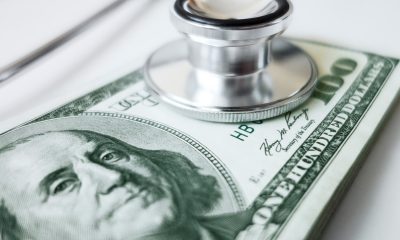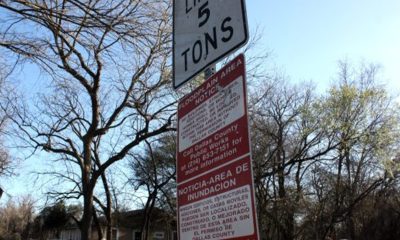Health
Opinion: Energy Drinks Are Killing Young People. It’s Time to Stop That.

Last week, a 16-year-old tragically lost his life after consuming an energy drink, a soda and a latte — drinks routinely consumed by and often intensively marketed to youth — all within a few hours.
According to the coroner, the boy’s heart simply couldn’t cope with the amount of caffeine in the beverages.
The teen wasn’t the first to pay a terrible price for drinking popular beverages that are commonly (but mistakenly) considered safe, but he must be the last.
The government must take steps to reduce caffeine levels allowed in energy drinks; to clearly provide recommendations for the safe caffeine consumption for children and adolescents; to ban the marketing of energy drinks to youth of all ages; and to help educate the public on the health risks of high caffeine intake.
Caffeine is a strong and potentially dangerous stimulant, particularly to children and adolescents. When people think of the drug, they generally think of coffee. But what is less widely known is that a single serving of an energy drink may contain much more caffeine than a cup of coffee.
While the caffeine in a serving of coffee can range from 60 mg all the way up to several hundred mg in an extra-large expresso drink, these coffee varieties are not specifically marketed to teen-agers in the way that energy drinks are.
Making matters worse, consumers do not know the risks of the high levels of caffeine in an energy drink. Nutrition labels are not legally required to include information about caffeine content — a critical and potentially life-threatening omission.
Many energy drink manufacturers have initiated voluntary labeling initiatives, but they are not consistently applied and they do not provide adequate information to ensure consumers appropriately interpret the level of risk presented by the beverage. Labels are a first step — necessary, but not sufficient.
Unlike coffee, energy drinks are widely marketed to adolescents, putting them at risk of extreme caffeine overload with potentially devastating cardiovascular and neurological consequences. From 2005 to 2011, energy drink-related emergency room visits increased from 1,128 to 20,783. This included high rates of unintentional exposure in children younger than 6 years old. In 2013, the American Medical Association adopted a policy supporting a ban on the marketing of energy drinks to youth under the age of 18 years, saying, “Energy drinks contain massive and excessive amounts of caffeine that may lead to a host of problems in young people including heart problems …”
In 2011, the American Academy of Pediatrics released a report on the appropriateness of sports and energy drinks for children and adolescents. They concluded that “…energy drinks pose potential health because of the stimulants they contain, and should never be consumed by children and adolescents.”
Still, energy drink consumption has skyrocketed in recent years, even as soda consumption has begun to decline. Given the danger energy drinks pose to children and youth with no potential benefit to their health or wellbeing, the marketing and advertising of these products to young people must stop.
Because manufacturers add caffeine to energy drinks, it is subject to regulation by the Food and Drug Administration as a food additive. In fact, the FDA has recognized the risks of high caffeine consumption and imposed a 71-milligram limit on the level of caffeine that may be added to a 12-ounce soda.
However, no limits currently are imposed on the caffeine content of energy drinks, and containers easily can contain 200 to 300 milligrams or more. There is no justification for this regulatory distinction.
Youth drinking energy drinks need as much protection as those drinking Coke or Pepsi.
Adolescents — the prime consumers of energy drinks — are entitled to information that can save their lives. The FDA’s limits on added caffeine in colas should also be applied to energy drinks, and the amount of caffeine added to an energy drink should always be listed on its nutrition label, including a distinct front-of-package warning for drinks with caffeine levels greater than those allowed in soda.
Information based on scientific testing should also be made available on the effects of energy drink additives, such as guarana and taurine, that can increase the potency and increase the effects of caffeine.
As the sales of energy drinks rise every year, the need to act becomes even more critical. Steps to protect the health of our children are both feasible and necessary.
The problem has been identified; now is the time to act.
This article appeared in The Berkeley Blog. Opinion by Pat Crawford and Wendi Gosliner
Community
Calif. Dept. of Public Health: Got Milk Allergies? Don’t Eat Dave’s Bakery Cornbread
The California Department of Public Health (CDPH) issued a warning on Jan. 26, instructing consumers with milk allergies or “severe sensitivity to milk” in the state to not eat Dave’s Bakery Corn Bread due to “risk of illness.” The CDPH warns that consumption of the corn bread manufactured by a Gardena-based company — with expiration dates up to June 18, 2024 — may lead to “life threatening” reactions.
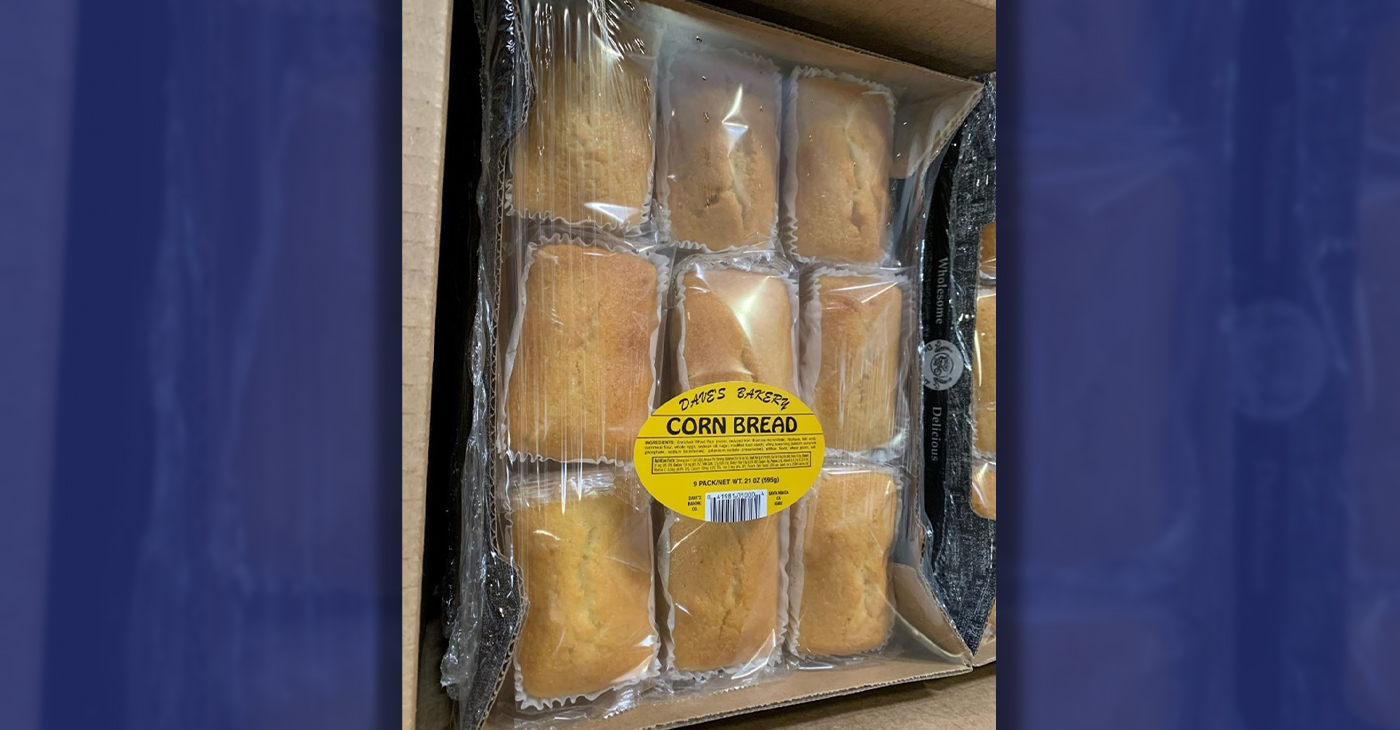
By California Black Media
The California Department of Public Health (CDPH) issued a warning on Jan. 26, instructing consumers with milk allergies or “severe sensitivity to milk” in the state to not eat Dave’s Bakery Corn Bread due to “risk of illness.”
The CDPH warns that consumption of the corn bread manufactured by a Gardena-based company — with expiration dates up to June 18, 2024 — may lead to “life threatening” reactions.
“This warning applies only to the Corn Bread produced by Bake R Us, DBA Dave’s Baking Company and distributed to schools, retail facilities and in vending machines primarily in southern California,” the DCPH statement reads.
“This product should not be confused with other similarly named companies with national distribution,” it continues.
According to the CDPH, although the corn bread product contains whey, which is a milk allergen, there is no allergy warning label on the packaging, though it is required by state law.
So far, authorities say, no illnesses have been reported in the state, but if anyone finds the products on sale anywhere in the state, they should call the CDPH complaint hotline at (800) 495-3232 or file a report online at CDPH.ca.gov
The CDPH is also recommending that people who have eaten the product and are experiencing any reaction or ill effects should consult their health care provider.
Bay Area
East Bay Regional Park District Issues Rattlesnake Advisory
The East Bay Regional Park District released an advisory today on rattlesnakes, which emerge from winter hibernation in early spring and become more active. Warm weather can bring more potential for rattlesnake encounters with humans and dogs, particularly along trails and roads.
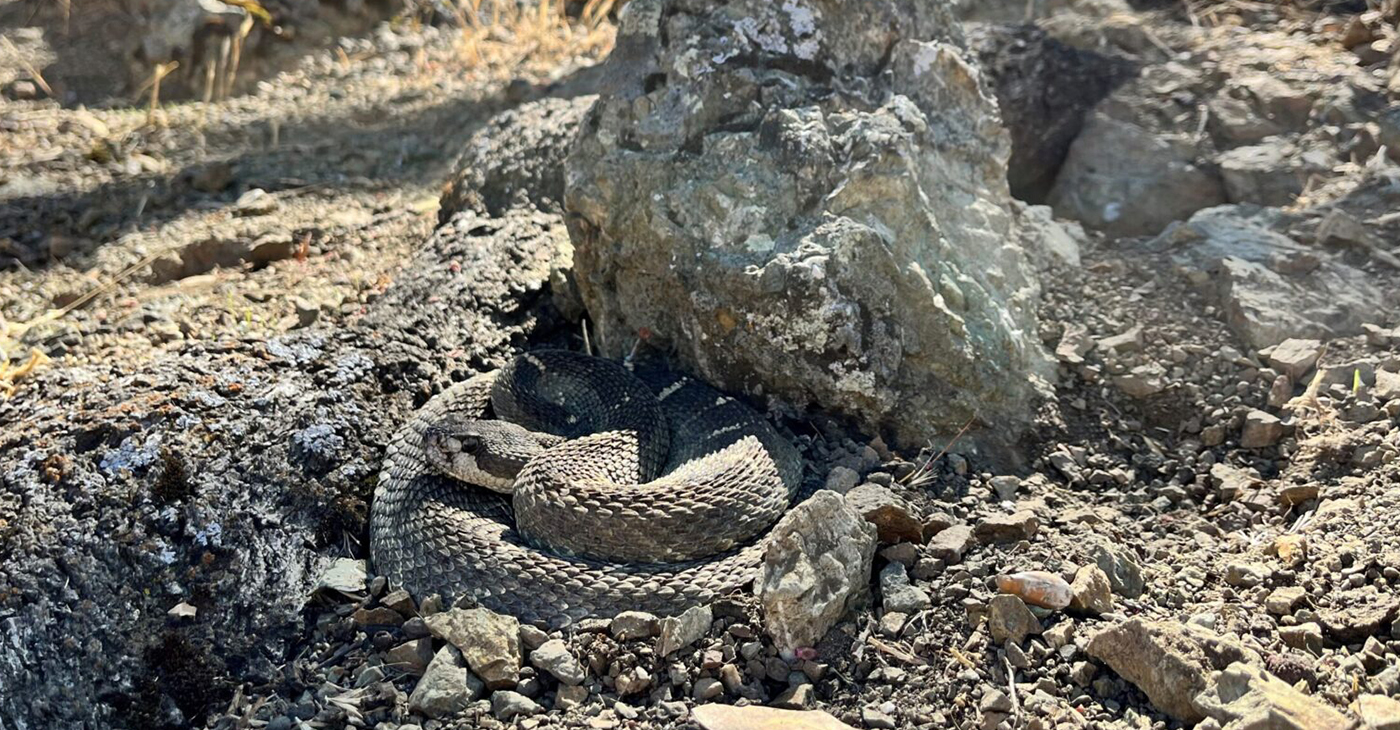
The Richmond Standard
The East Bay Regional Park District released an advisory today on rattlesnakes, which emerge from winter hibernation in early spring and become more active.
Warm weather can bring more potential for rattlesnake encounters with humans and dogs, particularly along trails and roads.
Visitors are encouraged to avoid hiking alone in case of an emergency, to scan the ground ahead as they walk, jog or ride, stay on trails avoiding tall grass, and to look carefully around and under logs and rocks before sitting down. Keep your dog on your leash to be extra safe, park officials said.
If you encounter a rattlesnake, leave it alone – it is unlawful to capture or harm one. Move carefully and slowly away or around it and give it plenty of space, park officials said.
Those who are bitten by a rattlesnake are instructed to stay calm by lying down with the affected limb lower than the heart, then having someone call 911.
Getting medical attention is critical.
Those bitten should not use tourniquets, “sucking,” or snake bite kits. If you are by yourself, walk calmly to the nearest source of help to dial 911, do not run.
If bitten by any other type of snake, wash the wound with soap and water or an antiseptic and seek medical attention.
Not sure what bit you? Check the bite for two puncture marks (in rare cases one) associated with intense, burning pain, which is typical of a rattlesnake bite. Other snakebites can leave marks without associated burning pain.
The Northern Pacific rattlesnake is the species found in East Bay Regional Parks. Snakes are important to the natural environment, helping to control rodents and other reptile populations. But enjoy them from afar.
For more information, download the Park District’s Common Snakes brochure or watch our Gopher Snake or Rattlesnake video to learn how to tell the difference between rattlesnakes and gopher snakes. Additional information is available at ebparks.org/safety/wildlife-encounters.
Alameda County
A Safe Place, Bay Area Domestic Violence Community Organization, Opens New Service Center in Oakland
Oakland-Bay Area non-profit, A Safe Place, announces the grand opening of its newly purchased building in Oakland that will be a service center for families that have suffered from domestic violence. The new, two-story building has over six new service rooms for counseling, mental health support groups, legal services, children’s treatment, safe space for community engagement, and partnership activities.
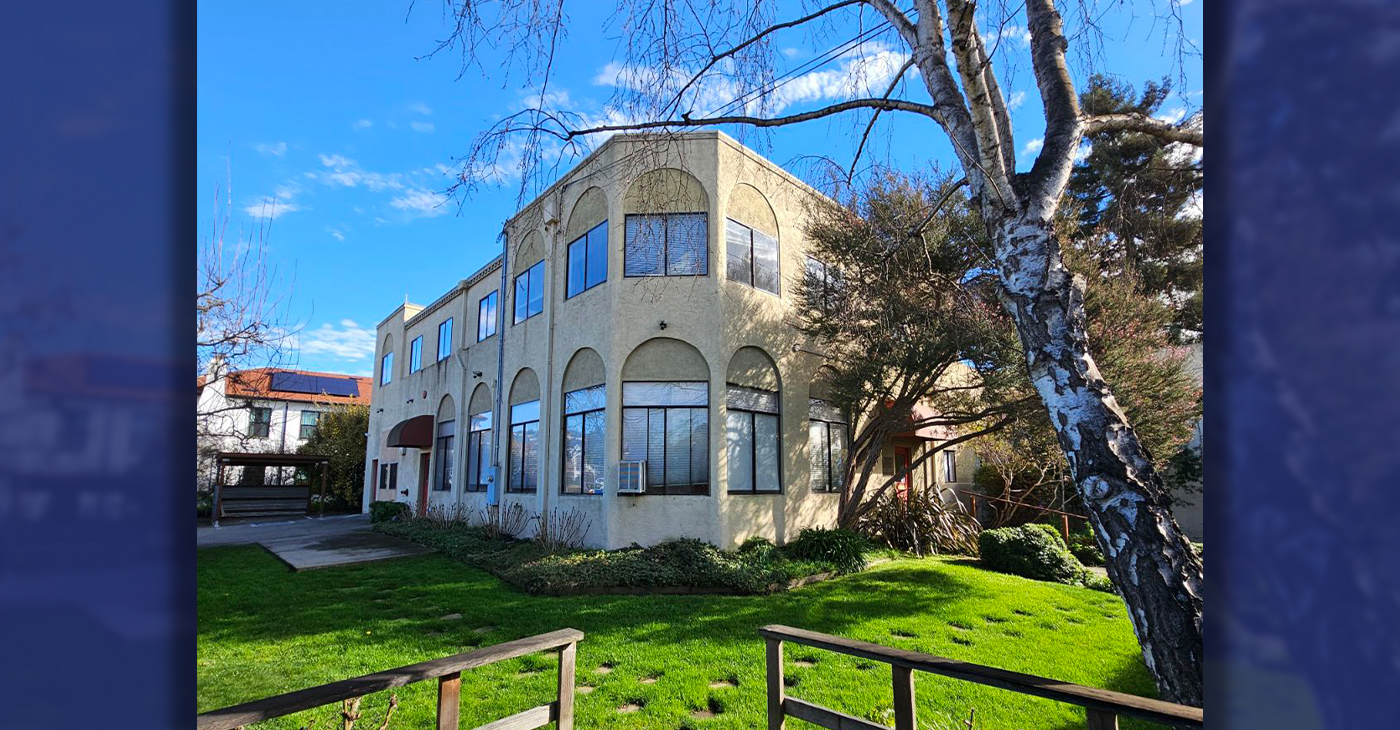
By Courtney Slocum Riley
Special to The Post
Oakland-Bay Area non-profit, A Safe Place, announces the grand opening of its newly purchased building in Oakland that will be a service center for families that have suffered from domestic violence.
The new, two-story building has over six new service rooms for counseling, mental health support groups, legal services, children’s treatment, safe space for community engagement, and partnership activities.
Domestic violence occurrences and offenses account for a considerable amount of all violent crimes in Alameda County. A Safe Place is attempting to provide a safe place for families to heal. A Safe Place is the only comprehensive domestic violence assistance program including a safehouse, in Oakland.
The grand opening celebration will also serve as a fundraiser to build out healing, therapeutic spaces for children and adult victims and survivors and survivors of domestic violence (male and female).
The new service center will expand the work of the organization, founded in 1976 when a group of women working in San Francisco came together to address the urgent need for a shelter in the East Bay. A year later, they founded A Safe Place (ASP) in Oakland. Run solely by volunteers, they set up a crisis line to offer crisis counseling and information to battered women and their children.
The organization serves over 500 adults and children annually through a host of services including crisis counseling via 24-hour crisis line, emergency motel and safehouse sheltering, mental health services (counseling and support groups).
Under the leadership of Executive Director, Carolyn Russell, the organization has grown from a single program into the comprehensive domestic violence and assistance program. ASP strives to meet the growing and diverse needs of our growing community.
The organization hopes to complete all the upgrades and therapeutic room improvements by August 2024. The public is invited to donate to the effort by using the website at www.asafeplace.org/donate. The organization also accepts in-kind gifts as well as items from the organization’s Amazon Wishlist.
-

 Community3 weeks ago
Community3 weeks agoFinancial Assistance Bill for Descendants of Enslaved Persons to Help Them Purchase, Own, or Maintain a Home
-

 Activism4 weeks ago
Activism4 weeks agoOakland Post: Week of April 3 – 6, 2024
-

 Business3 weeks ago
Business3 weeks agoV.P. Kamala Harris: Americans With Criminal Records Will Soon Be Eligible for SBA Loans
-

 Activism3 weeks ago
Activism3 weeks agoOakland Post: Week of April 10 – 16, 2024
-

 Community3 weeks ago
Community3 weeks agoAG Bonta Says Oakland School Leaders Should Comply with State Laws to Avoid ‘Disparate Harm’ When Closing or Merging Schools
-

 Community2 weeks ago
Community2 weeks agoOakland WNBA Player to be Inducted Into Hall of Fame
-

 Community2 weeks ago
Community2 weeks agoRichmond Nonprofit Helps Ex-Felons Get Back on Their Feet
-

 Community2 weeks ago
Community2 weeks agoRPAL to Rename Technology Center for Retired Police Captain Arthur Lee Johnson




